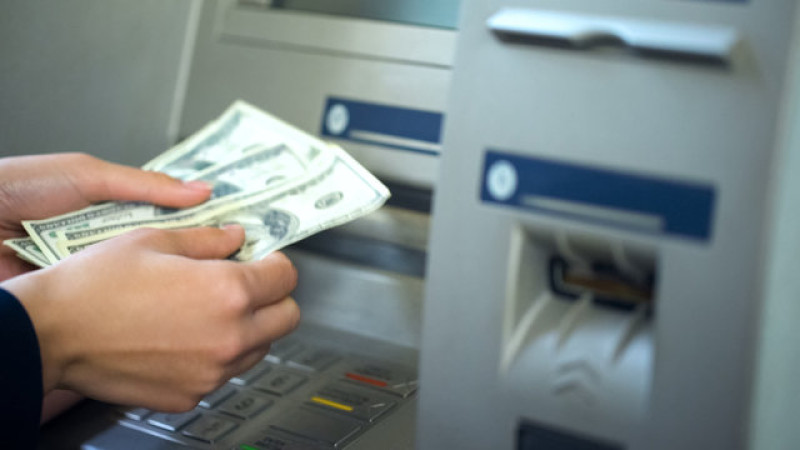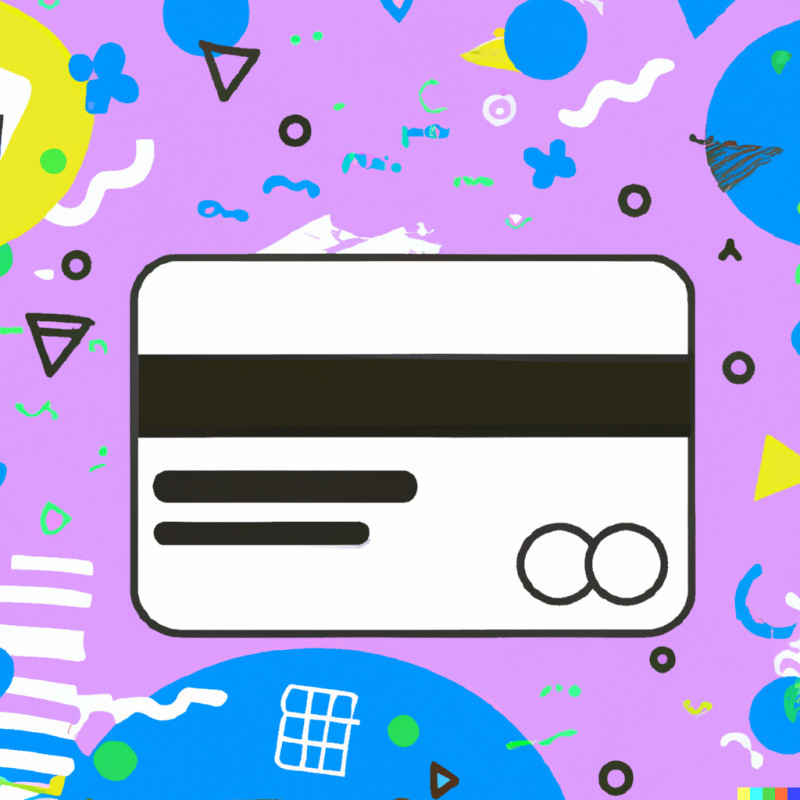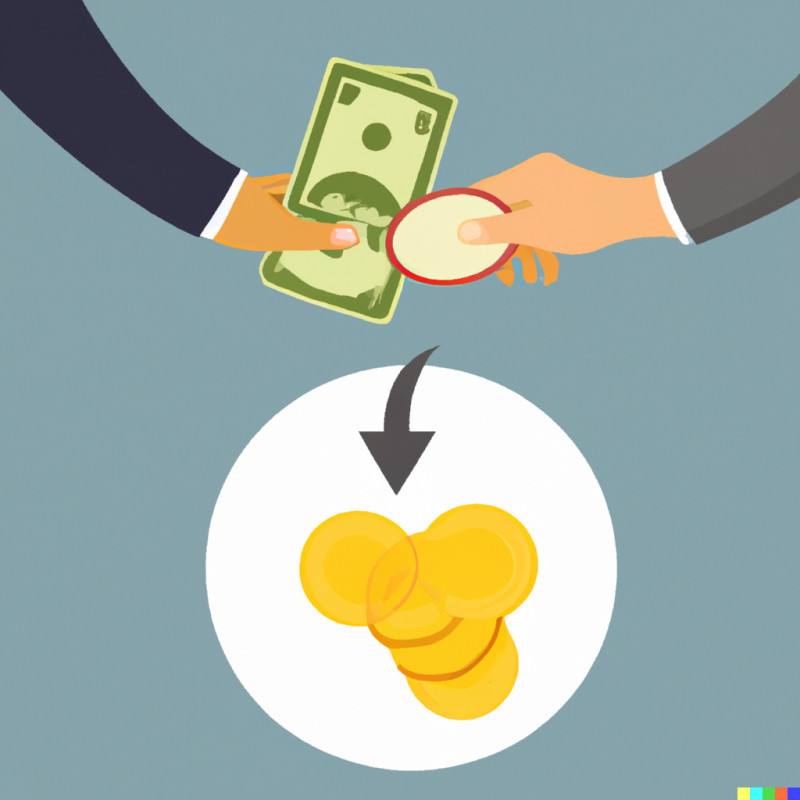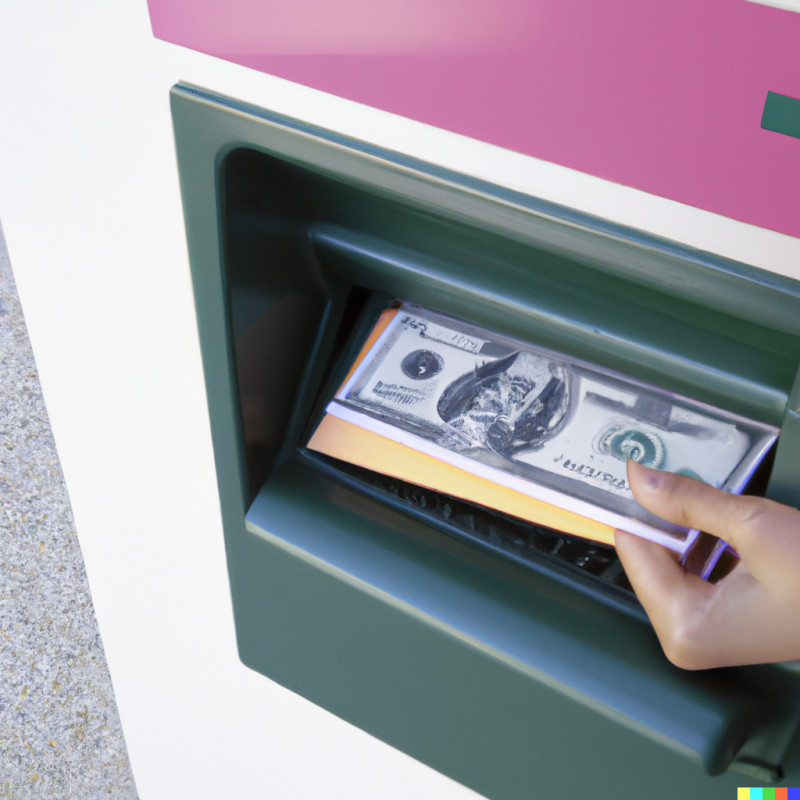
Withdrawal and deposit are two important transactions in finance that refer to the movement of money in and out of an account. A withdrawal involves taking money out of an account, while a deposit involves adding money into an account. This article will explore the process of making withdrawals and deposits, as well as the various methods available for completing these transactions, including in-person, online, and mobile banking. It will also discuss the rules, fees, and security considerations associated with these transactions.
What is a Deposit?
A deposit is an amount of money that is placed into a bank account, investment account, or other type of financial account. Deposits can be made in a variety of ways, such as with cash, check, or electronic transfer. The money deposited into an account can be used for a variety of purposes, such as saving for a future purchase or earning interest.
How a Deposit Works
When a deposit is made, the money is credited to the account holder's account and becomes available for use. Depending on the type of account and the institution holding the account, the deposit may be subject to certain restrictions or requirements. For example, some accounts may require a minimum deposit amount, while others may have limits on the number of withdrawals that can be made.
In the case of deposit and withdrawal in trading, deposits are made to add funds to trading account, and withdrawal is the process of taking out money from the trading account.

Types of Deposits
There are several different types of deposits, each with its own unique characteristics. Some of the most common types of deposits include:
- Savings deposits: These are accounts that typically offer a low interest rate but are FDIC-insured and are accessible.
- Checking deposits: These are accounts that allow account holders to write checks or make debit card transactions.
- Time deposits: These are also known as certificates of deposit (CDs), which are accounts that require the account holder to leave the deposit on deposit for a specific amount of time, usually a few months to a few years in exchange for a higher interest rate.
- Money market deposits: These are accounts that typically offer a higher interest rate than savings accounts but usually have higher minimum deposit requirements and may limit the number of withdrawals that can be made.
Overall, deposits are an important aspect of managing your finances and can be used for a variety of purposes, including saving for a future purchase, earning interest, and supporting your trading account.
Takeaway
A deposit is an amount of money placed into a bank account, investment account, or other type of financial account. Deposits can be made in a variety of ways, such as with cash, check, or electronic transfer. Deposits are an important aspect of managing your finances and can be used for a variety of purposes, including saving for a future purchase, earning interest, and supporting your trading account through deposit and withdrawal.
It's important to understand the different types of deposits available and their unique characteristics, such as interest rates, minimum deposit requirements, and withdrawal limitations, in order to make informed decisions about where to place your money. By understanding the concept of deposit and withdrawal, you'll be able to better manage your finances and make the most of your money.
What is a Withdrawal?
A withdrawal is the process of taking money out of a bank account, investment account, or other type of financial account. Withdrawals can be made in a variety of ways, such as through an ATM, online banking, or by visiting a bank branch. The money withdrawn can be used for a variety of purposes, such as paying bills, making a purchase, or withdrawing cash.
How a Withdrawal Works
When a withdrawal is made, the money is debited from the account holder's account and is no longer available for use. Depending on the type of account and the institution holding the account, withdrawals may be subject to certain restrictions or requirements. For example, some accounts may have limits on the number of withdrawals that can be made, or may require a minimum balance to be maintained.

Types of Withdrawals
There are several different types of withdrawals, each with its own unique characteristics. Some of the most common types of withdrawals include:
- ATM withdrawals: These are withdrawals made using an ATM machine, which typically have limits on the amount that can be withdrawn per day.
- Online banking withdrawals: These are withdrawals made through an online banking platform, which may have limits on the amount that can be withdrawn per day or per transaction.
- Bank branch withdrawals: These are withdrawals made by visiting a bank branch and speaking with a teller, which may have limits on the amount that can be withdrawn per day or per transaction.
- Wire transfer withdrawals: These are withdrawals made by transferring money to another bank account, which may have limits on the amount that can be withdrawn per day or per transaction.
Takeaway
A withdrawal is the process of taking money out of a bank account, investment account, or other type of financial account. Withdrawals can be made in a variety of ways, such as through an ATM, online banking, or by visiting a bank branch. Withdrawals are an important aspect of managing your finances and can be used for a variety of purposes, including paying bills, making a purchase, or withdrawing cash. It's important to understand the different types of withdrawals available and their unique characteristics, such as limits on the amount that can be withdrawn, in order to make informed decisions about how to access your money. By understanding the concept of deposit and withdrawal, you'll be able to better manage your finances and make the most of your money.
Similarities and Differences Between Deposits and Withdrawals
Deposits and withdrawals are two fundamental concepts in the world of personal finance and banking. Deposits refer to the process of putting money into an account, while withdrawals refer to the process of taking money out of an account. Both deposits and withdrawals are important aspects of managing your finances, and both play a crucial role in maintaining the balance of your account. However, there are some key similarities and differences between the two concepts that are important to understand.
How Deposits and Withdrawals Are Similar
One of the main similarities between deposits and withdrawals is that both are used to manage the balance of an account. Deposits are used to add money to an account, while withdrawals are used to take money out of an account. This means that both deposits and withdrawals play a crucial role in maintaining the balance of an account.
Another similarity between deposits and withdrawals is that both can be made in a variety of ways. Deposits can be made using cash, check, or electronic transfer, while withdrawals can be made using an ATM, online banking, or by visiting a bank branch. This means that both deposits and withdrawals offer a level of flexibility and convenience for account holders.
In the case of deposit and withdrawal in trading, deposits are made to add funds to trading account, and withdrawal is the process of taking out money from the trading account. Both are essential to traders to manage their account balances and make trading decisions.

How Deposits and Withdrawals Are Different
Despite their similarities, there are also some key differences between deposits and withdrawals. One of the main differences is that deposits are used to add money to an account, while withdrawals are used to take money out of an account. This means that deposits are typically seen as a positive action, while withdrawals are typically seen as a negative action.
Another difference between deposits and withdrawals is that deposits typically do not have any restrictions or limitations, while withdrawals may be subject to certain restrictions or requirements. For example, some accounts may have limits on the number of withdrawals that can be made, or may require a minimum balance to be maintained.
Additionally, deposits typically come with certain benefits such as earning interest or earning rewards, while withdrawals may come with fees such as ATM or wire transfer fees.
Another difference to consider is that deposits are generally considered to be less risky than withdrawals. Deposits are essentially an investment in the account, and as such, they have a level of protection through FDIC insurance or other guarantees. Withdrawals, on the other hand, can be subject to market fluctuations and other risks, particularly in investment accounts.
It's also worth noting that deposits can be used to earn interest on the deposited amount, while withdrawals do not earn any interest. Deposits can also be used to qualify for certain benefits or rewards, such as higher interest rates or cashback offers. Withdrawals, on the other hand, may come with fees such as ATM fees or wire transfer fees.
Another important difference is that deposits can be made at any time, but withdrawals may have certain restrictions or limitations. For example, some accounts may have daily or monthly withdrawal limits, or may require a certain number of days notice before a withdrawal can be made.

Some aspects
It's also worth noting that the process of making deposits and withdrawals can vary depending on the type of account and the institution holding the account. For example, some accounts may require a signature or a specific form to be filled out for deposits, while others may only require an electronic transfer. Similarly, some accounts may require a signature or a specific form to be filled out for withdrawals, while others may only require an ATM card or online banking access.
In terms of security, deposits are generally considered to be more secure than withdrawals. Deposits are typically made through secure channels, such as bank branches or electronic transfers, and the funds are immediately credited to the account. Withdrawals, on the other hand, may be subject to fraud or other security risks, particularly if made through an ATM or online banking.
Another important aspect to consider is that deposits and withdrawals can have different tax implications. Deposits may be tax-free, while withdrawals may be subject to taxes, depending on the type of account and the amount withdrawn. It's important to consult with a financial advisor or tax professional to understand the tax implications of deposits and withdrawals.
It is important for traders to understand the deposit and withdrawal methods available for their trading account and the fees and limitations associated with them.
Takeaway
In summary, deposits and withdrawals are two important concepts in personal finance and banking, but they have some key differences to consider. Deposits are used to add money to an account, while withdrawals are used to take money out of an account. Deposits are generally considered less risky than withdrawals and can be used to earn interest, while withdrawals may come with fees and have certain restrictions or limitations. By understanding the similarities and differences of deposit and withdrawal, you'll be able to make informed decisions about how to manage your finances.

Withdrawal And Deposit
At our online broker, we make it easy for you to manage your account. With our simple and secure platform, you can easily make deposits and withdrawals with just a few clicks. Our platform supports a variety of deposit and withdrawal methods, including credit and debit cards, bank transfers, and e-wallets.
Quick withdrawal and deposit of funds
We understand the importance of timely and efficient deposits and withdrawals, which is why we process all transactions as quickly as possible. Plus, our state-of-the-art security measures ensure that your personal and financial information is always protected.
Сompetitive fees on all transactions
In addition to our fast and secure deposit and withdrawal options, we also offer competitive fees on all transactions. Whether you're making a deposit or a withdrawal, you can rest assured that you're getting a great deal.

Wide range of services, including withdrawal and deposit options
At our online broker, we're committed to providing our clients with the best possible experience. That's why we offer a wide range of services, including withdrawal and deposit options, to help you manage your account with ease. So why wait? Sign up now and start trading with confidence!
Variety of fast and secure deposit and withdrawal methods with competitive fees
In summary, our online broker offers a variety of fast and secure deposit and withdrawal methods with competitive fees, with a user-friendly platform to manage your account. Sign up now to experience the convenience and ease of managing your account with us.
Deposits and Withdrawals for Traders
Deposits and withdrawals are an important aspect of trading, as they allow traders to manage their capital and access their profits.
Depositing Funds
When it comes to depositing funds into a trading account, there are several options available to traders. The most common methods include:
Bank wire transfer: This is a traditional method of transferring funds from a bank account to a trading account. This method is generally considered the most secure but can take several days for the funds to be credited to the trading account.
Credit/debit card: Many trading platforms accept deposits via credit or debit card, which allows traders to quickly and easily transfer funds into their trading account. However, some platforms may charge additional fees for this method.
E-wallets: E-wallets such as PayPal, Skrill, and Neteller are also widely accepted by trading platforms. This method is fast and convenient but may also be subject to additional fees.
Cryptocurrency: Some trading platforms allow traders to deposit funds using cryptocurrencies such as Bitcoin, Ethereum, and Litecoin. This method is fast and secure but may be subject to price fluctuations.

Withdrawing Funds
When it comes to withdrawing funds from a trading account, the process is generally straightforward. Traders can request a withdrawal from their trading platform and the funds will be transferred to the designated bank account or e-wallet. However, it's important to note that some trading platforms may have specific requirements for withdrawing funds, such as a minimum withdrawal amount or a waiting period before the funds are credited.
Fees and Regulations
It's important for traders to be aware of any fees associated with depositing and withdrawing funds. These may include transaction fees, conversion fees, or withdrawal fees. It's also important to be aware of any regulations or restrictions that may apply to depositing and withdrawing funds. These may include account verification, anti-money laundering regulations, or restrictions on the amount that can be withdrawn.
Conclusion
Depositing and withdrawing funds is a crucial aspect of trading, as it allows traders to manage their capital and access their profits. By understanding the different methods available and the associated fees and regulations, traders can make more informed decisions about how to manage their funds and achieve their trading goals. It's important to consult with a financial advisor and to be aware of all the fees and regulations associated with depositing and withdrawing funds before making any transactions.
Frequently Asked Questions About Deposits and Withdrawals
- What are the most common methods for making deposits? The most common methods for making deposits include credit and debit cards, bank transfers, and e-wallets.
- What are the most common methods for making withdrawals? The most common methods for making withdrawals include bank transfers and e-wallets.
- Are there any fees associated with deposits? Some financial institutions may charge fees for certain types of deposits, such as wire transfers. However, many institutions also offer free deposit options, such as electronic transfers or cash deposits at a bank branch.
- Are there any fees associated with withdrawals? Some financial institutions may charge fees for certain types of withdrawals, such as ATM withdrawals or wire transfers. However, many institutions also offer free withdrawal options, such as online banking or visiting a bank branch.
- Are there any limits on the number of deposits or withdrawals that can be made? Some financial institutions may have limits on the number of deposits or withdrawals that can be made, particularly for certain types of accounts. It's important to check with your financial institution to understand any limits that may apply to your account.
- How long does it take for a deposit to be credited to my account? The time it takes for a deposit to be credited to your account can vary depending on the type of deposit and the financial institution. Electronic transfers are typically credited to the account immediately, while deposits made by check or cash may take a few days to clear.
- How long does it take for a withdrawal to be processed? The time it takes for a withdrawal to be processed can vary depending on the type of withdrawal and the financial institution. Withdrawals made through online banking or visiting a bank branch are typically processed immediately, while withdrawals made through an ATM or wire transfer may take a few days to process.
- Are there any security measures in place for deposits and withdrawals? Most financial institutions have security measures in place to protect against fraud and unauthorized transactions. These measures may include encryption, secure login protocols, and identity verification.
- Are there any restrictions or limitations on the type of currency that can be deposited or withdrawn? Some financial institutions may have restrictions or limitations on the type of currency that can be deposited or withdrawn. It's important to check with your financial institution to understand any restrictions that may apply to your account.
By understanding the deposit and withdrawal methods, fees and limitations, account holders can make more informed decisions about how to manage their finances.





